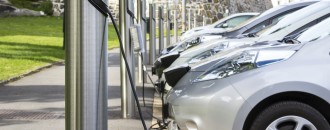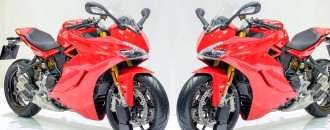
Centre mulls 10-year Automotive Mission Plan from 2006-16
The Dollar Business Bureau  The Finance Ministry is yet to take a decision in Union Budget 2015 on restoration of lower excise duty (that was withdrawn at the end of December). But, that has not stopped G M Siddeshwara, the Minister of State in the Ministry of Heavy Industries and Public Enterprises. From taking several initiatives to strengthen the automotive sector such as setting up of Automotive Skill Development Council (ASDC). As part of a 10-year Automotive Mission Plan (AMP) 2006-16, the Government is planning to introduce automotive cess funding to support R&D projects, starting of National Automotive R&D Infrastructure Project (NATRIP) for setting up of world class infrastructure for homologation and testing, setting up of the National Automotive Board (NAB) as a repository of auto R&D expertise and an apex coordinating body to address the need of collaborative R&D and synergizing the activities of NATRIP. All these measures are being undertaken to maintain high rate of growth and to retain the attractiveness of Indian market and for further enhancing the competitiveness of Indian automotive companies. The Government has also taken initiative for introducing Electric/Hybrid transportation in the country under National Electric Mobility Mission Plan (NEMMP) 2020 to provide clean mobility solutions to the people while reducing the country’s dependence on fossil fuel. NEMMP 2020 visualizes introduction of 6-7 million hybrid/electric vehicles by the end of 2020. Recently, The Heavy Industries and Public Enterprises Ministry wanted restoration of lower excise duty benefits to the Automobile Industry that had been withdrawn at the end of December. The previous UPA government, in order to boost the two sectors that were struggling in the wake of economic downturn, had cut excise duty on cars, SUVs, two-wheelers and consumer durables in the interim Budget in February. Excise duty on small cars, scooters, motorcycles and commercial vehicles was reduced to 8% from 12% previously. For SUVs, it was cut to 24% from 30%; for mid-sized cars to 20% from 24% and to 24% for large cars from 27%. In June, the new government led by Prime Minister Narendra Modi extended the excise duty concessions by 6 months to December 31. However, excise duties are back to the rates that existed before February 2014. The withdrawal of excise duty had an impact on sales in January with main players Maruti Suzuki and Hyundai posting single digit growth in January, while others like GM India and Ford and Mahindra and Mahindra saw decline in sales. Tata Motors, Toyota and Honda Cars India were, however, exceptions posting healthy double-digit growth rates during the month.
The Finance Ministry is yet to take a decision in Union Budget 2015 on restoration of lower excise duty (that was withdrawn at the end of December). But, that has not stopped G M Siddeshwara, the Minister of State in the Ministry of Heavy Industries and Public Enterprises. From taking several initiatives to strengthen the automotive sector such as setting up of Automotive Skill Development Council (ASDC). As part of a 10-year Automotive Mission Plan (AMP) 2006-16, the Government is planning to introduce automotive cess funding to support R&D projects, starting of National Automotive R&D Infrastructure Project (NATRIP) for setting up of world class infrastructure for homologation and testing, setting up of the National Automotive Board (NAB) as a repository of auto R&D expertise and an apex coordinating body to address the need of collaborative R&D and synergizing the activities of NATRIP. All these measures are being undertaken to maintain high rate of growth and to retain the attractiveness of Indian market and for further enhancing the competitiveness of Indian automotive companies. The Government has also taken initiative for introducing Electric/Hybrid transportation in the country under National Electric Mobility Mission Plan (NEMMP) 2020 to provide clean mobility solutions to the people while reducing the country’s dependence on fossil fuel. NEMMP 2020 visualizes introduction of 6-7 million hybrid/electric vehicles by the end of 2020. Recently, The Heavy Industries and Public Enterprises Ministry wanted restoration of lower excise duty benefits to the Automobile Industry that had been withdrawn at the end of December. The previous UPA government, in order to boost the two sectors that were struggling in the wake of economic downturn, had cut excise duty on cars, SUVs, two-wheelers and consumer durables in the interim Budget in February. Excise duty on small cars, scooters, motorcycles and commercial vehicles was reduced to 8% from 12% previously. For SUVs, it was cut to 24% from 30%; for mid-sized cars to 20% from 24% and to 24% for large cars from 27%. In June, the new government led by Prime Minister Narendra Modi extended the excise duty concessions by 6 months to December 31. However, excise duties are back to the rates that existed before February 2014. The withdrawal of excise duty had an impact on sales in January with main players Maruti Suzuki and Hyundai posting single digit growth in January, while others like GM India and Ford and Mahindra and Mahindra saw decline in sales. Tata Motors, Toyota and Honda Cars India were, however, exceptions posting healthy double-digit growth rates during the month.
This article was published on February 24, 2015.






 to success.
to success.